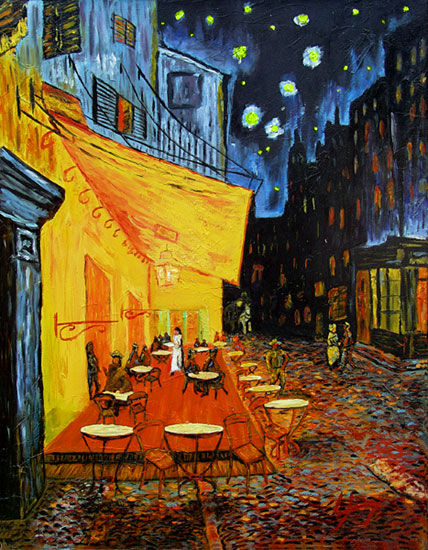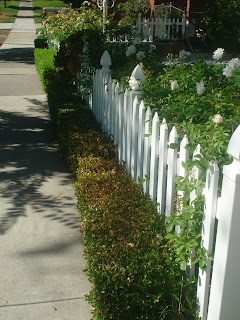 |
| Here is the shirt I made in art class... |
BrysonBrown
Wednesday, December 1, 2010
Monday, October 18, 2010
City of Reno / Rainbow Trout Sculptures
Located at Idelwild Park pond in Reno NV, three massive sculptures of rainbow trout sit in beautiful wonder. The artist Eileen Gay and others, created a masterpiece of mosaic simplicity of color and truth of her description of wildlife. As the rainbow trout have an iconic depiction for this area, it allows the high desert of Washoe County live up to it's pristine wildlife.
Similar to the very talented Maya Lin and her architectural designs of the Vietnam Memorial and the Civil Rights piece, Eileen Gay utilized her surroundings and incorporated the landscape to add addition value to her brightly colored arrangement of textile art.
Similar to the very talented Maya Lin and her architectural designs of the Vietnam Memorial and the Civil Rights piece, Eileen Gay utilized her surroundings and incorporated the landscape to add addition value to her brightly colored arrangement of textile art.
Sunday, October 10, 2010
Drifting Reno
Monday, October 4, 2010
Representational Vs. Abstract
As seen in the history of art, artists have portrayed the world through the eyes of the beholder. Either the visions of a natural landscape, or perhaps in this case, the Treaty Signing at Medicine Creek Lodge, by Howling Wolf and John Taylor have described this historic day in two different opinions of art. To begin with, critical understanding of John Taylor’s depiction has a representational quality with a wonderful description on how the treaty might have been signed. The form is pencil on paper, with a black and white contrast; Taylor analyzes this event in a rather “mature” fashion encompassing figures that resemble the actual truth with a lifelike feel. In addition, it appears that Taylor has utilized men figures in his work of art, possibly to emphasize role of the “white” male figure set in the mid 1800’s. In comparison, Howling Wolf’s colorful method has recorded the same event utilizing pencil, crayon on ink paper, emphasizing the women all clothed in Native American dresses. From Wolf’s point of view, I can only surmise that he related the women to his piece as a sense of purity and divine.
Again, analyzing Wolf’s piece, he use images that is relatable to describing the event. Using iconology, we can look that the tepees as a symbol of culture for the Native Americans. Also, vibrant color enhances the imagination as do described as symbols of culture color, dress, and the way of life. Yet, Taylor produces the influence as we would picture a gathering in a town hall, or even the signing of the Declaration of Independence hundred years prior. A western interpretation from a western mind set.
To understand each work of art individually, each represent a quality that requires definition. Taylor falls under the heading of representational art as Wolf is influenced by the abstract interpretation of the event long ago. Both possess the same notion of wonder, realism, and how each culture views the world through understanding how their own culture has intergraded with storytelling.
Sunday, September 26, 2010
The Café Terrace on the Place du Forum, by Vincent Van Gogh
A place of silence, and the hidden truth...
Either it was his intention or not, Van Gogh has always painted scenes of complete solitude. Majority of his work has hinted quietly, resembling the ultimate desire of peace and tranquil required around us. Some hidden universal truth, and above all, an understanding that we somehow need to do the same by running away into a Van Gogh dream. All the lighting, colors, and themes suggest that bright colors converging with dull backdrops remove our attention and pull us beyond the chaotic hustle and into another realm of escape. It is obvious that Van Gogh knew of these places hidden within a forgotten city, separated far from the world. Small café tables lines with a cheap cloth, set with small candles burning low in the middle of the tables. Accompanied with a few visitors, and the exception of a few small shops and the café lighting, a bright star filled sky illuminates the cobblestone streets with life. The feel of roman sic sense of wonder and gaze, this where the secrets lie and love begins. The greatest food one has ever tasted, and where wine flows like the fountains adding to this dramatic universal truth. Hidden behind feelings that Van Gogh shared, the truth of inner peace is left for us to find this small treasures like this, called The Café Terrace on the Place du Forum.
 |
| Google Images |
Visit the link to see other Van Gogh paintings...
Thursday, September 16, 2010
Chester Arnold’s Vision of Humanity
As centuries continue and the complexities unravel, one artist peers through humanity in a sense of realization, or possibly in a pessimistic impression. Whether the intentions are negative or just simply the truth, humans are still captivated by his works of art. Chester Arnold’s paintings seem to speak of what we’ve committed, or what is to come in our fateful future using images of horrific mortalities and beautiful landscapes consumed by hellish array of colors breathing life into his masterpieces.
I first visited Chester Arnold’s exhibit, “Between Heaven and Earth” at the Nevada Museum of Art in Reno NV, carefully absorbing every work of art that I was exposed to while opening all five senses to full intake this beautiful phenomenon. Rows of large white walls staggered behind each other each possessing their own work of art. Each wall hung Arnold’s art progressively in a chronological order from early to present. Positioned around the staggering walls, circled other works of art somehow completing each piece very carefully. One piece in particular left me in a surreal hypnotic trance of wonder. Landscape With the fall of Icarus (1996), fused together with inspiration from the Greek mythological character of Icarus, the biblical epic tale of Tower of Babel, Pieter Brueghel the Elder’s sixteenth century visionary painting, and the progression of societal destruction¹. A towering mountainous vista climbing up to the heavens is succumbed with congested traffic in either direction. Miner’s climbing the side of a cliff in pursuit of dismantling the mountain. As told for generations, Icarus warned by his father not to fly too close to the sun in risk of melting the wax in which his wings were constructed of, forgetting the warnings, the wax melted and Icarus fell to his death into the sea below². According to Arnold, he illustrates a Cessna plane, seeing it violently crashing into the sea as Icarus did thousands of years ago. Do we too ignore warnings from our own environment? We are ignoring the very destruction that will lead us to our very own demise by abusing our natural surroundings through technologies leading to pollution. From oil spills to the amount of carbon being poured into our seas and air, Arnold proclaims the position of foretelling this horrific reality. Even in the biblical tale of Tower of Babel, creating technology that brings us closer to God. To reach the heavens, and build a massive structure that is a symbol that would keep culture united and powerful³. Yet, the closer we get to the heavens; we tend to play the role of God, in result, threatening human life with Weapons of Mass Destruction, and going to war with countries because they seem to have different ideals of democracy. It seems that as technology progresses, humans continue to build “Babel” higher into an unknown question that can further cause damage to humanity.
Arnold seemingly examines the fragile human mind as we seem to examine the fragile world that he created on canvas. I guess we will always be in question of why we are the way we’ve become. According the Ancient Greeks, we can fly too high and fall victim to our own technologies and greed. Or biblically speaking, we can fall to the collapsing role that we are required to adhere by. Yet, somehow, our own destination of truth will never fully approach this, or resolve these inquiries without first facing the scary truth of future events if we don’t stop and listen.
Work Cited:
1. Chester Arnold, On Earth as it is on Heaven, by Ann M. Wolfe and Colin M. Robertson
3. www.twopaths.com/story_TowerOfBable.html
Subscribe to:
Posts (Atom)




